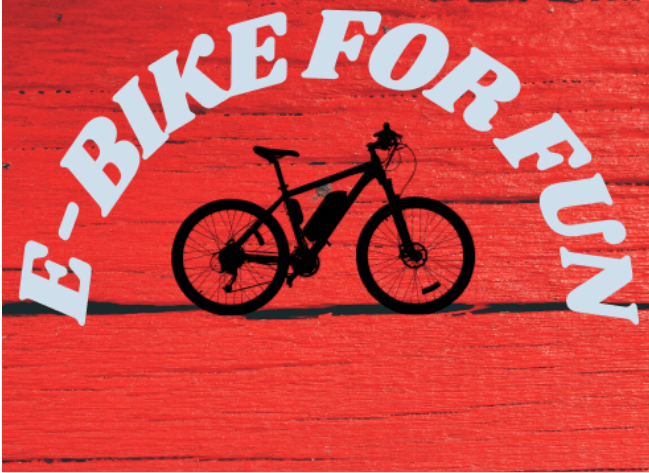Update: Since this post was written, an article in the Globe and Mail indicates that as of February 4, 2021, Transport Canada is no longer regulating e-bikes in Canada. It will be up to each province to create their own definition and regulations.
It is unclear, at this time, what this means for new or current e-bike owners. I’ll provide a further update as more information becomes available. Until then, the regulations as outlined in this post for each province remain in effect.
As a follow-up to my last post on buying your first e-bike, this post was going to help you with the actual purchase. However, while doing my research, I noticed a common e-bike concern on Google focused on this question, “are e-bikes legal in Canada?” In particular, this is a concern for new e-bike buyers over 50.
This is an important question to answer before investing in your new bike. However, just as important is understanding what restrictions or limitations come with owning an e-bike.
This post addresses this issue from three different perspectives
- federal regulation of e-bikes,
- provincial traffic laws
- local rules for e-bikes.
For my American readers, here is a link to a website that provides a thorough overview for the regulations for US states.
If you are over 50, are e-bikes legal?
The answer is absolutely YES – you can buy and ride e-bikes legally in most of Canada. However, there are specific definitions for e-bikes that impact whether there are any special licencing or insurance requirements. Unfortunately, not all e-bike retailers are aware of these regulations or ignore them when selling e-bikes. For those of us over 50, being on the right side of the law to avoid any potential hassles is important.
Federal E-bike regulations
Federally, e-bikes were identified as power assisted bicycles under the Motor Vehicle Safety Regulations. Previously E-bikes were defined as detailed below. Most provinces have adopted this definition even though the Federal legislation was repealed in early 2021. Until provinces update their legislation, e-bikes need to:
- be capable of being propelled by muscular power (i.e. have pedals),
- has one or more electric motors that have, singly or in combination, the following characteristics:
- has a total continuous power output rating, measured at the shaft of each motor, of 500 W or less (Important limitation as you will find e-bikes with larger motors),
- is engaged by the use of muscular power which ceases when the muscular power ceases (pedaling produces power, assisted or unassisted),
- if it is engaged by the use of an accelerator (i.e. throttle) power assistance immediately ceases when the brakes are applied, and
- is incapable of providing further assistance when the bicycle attains a speed of 32 km/h (20 mph) on level ground (e-bikes that exceed this limitation may require special licence or insurance),
- bears a label that is permanently affixed by the manufacturer and appears in a conspicuous location stating, in both official languages, that the vehicle is a power assisted bicycle
- has one of the following safety features,
- a mechanism that prevents the motor from being engaged before the bicycle attains a speed of 3 km/h (safety feature for bikes with throttle),
Why is it important to know this?
As you’ll see in the provincial details, most provinces have similar definitions for e-bikes. If you buy one that doesn’t fall within these definitions, there are potential insurance and licencing issues. Your recreational e-bike might be classified as a motorcycle or moped. While enforcement is uneven across the country, enforcement does occur. And if you get into an accident, there are additional liability issues to consider.
Current e-bike classifications
E-bikes have three common classifications – Class 1, 2, and 3. In Canada, Class 1 e-bikes are legal on streets, trails and bike paths. But be aware that in the US, Class 1 e-bikes are allowed to have 750 watt motors which exceed the Canadian maximum. You need to be aware of this if ordering a bike from the US.
Class 1 e-bikes under 500 watts provide the maximum freedom to ride almost anywhere you want to go.
Class 2 and 3 e-bikes have more restrictions and commonly are not permitted on local bike paths, within National Parks and some Provincial Parks. For a great description of the three classes, I’d recommend this post in the EBR website to describe the difference between classes. Remember though some of the references apply to the US and don’t apply in Canada.
To add more confusion, some e-bikes are only pedal assist (PAS) while some are both PAS and have a throttle. Most regulations don’t adequately address the difference between an e-bike and electric motorcycle or moped. For the most part, this shouldn’t be a major issue. Anecdotally though, a local distributer indicated e-bike owners riding on local bike paths in a small Alberta city and with throttle bikes were being fined this summer. Again, be aware of local requirements and enforcement policies.
Furthermore, you will be limited where you can use your e-bike in National Parks. Only Class 1 e-bikes are permitted to be ridden on many park trails. For more details, check out the restrictions for the National Park where you want to ride.
Is an e-bike licence required in your Province?
While the Federal government has established general guidelines to define e-bikes in Canada, each province can add more restrictions or limitations. To simplify things, I’ve reviewed publicly published information for each province and provided a link to the appropriate legislation. Every attempt has been made to ensure its accuracy and currency and you explore further if you are interested in your provincial legislation.
| Province | E-bikes Legal/Licencing Required | Summary Regulations | Comments |
| British Columbia | Yes/No | 500 watt motor 32 kph maximum 16 or over Helmet required Pedals required | Only Class 1 bikes permitted in most provincial parks. Recent legal cases reinforce the need to have pedals that work. |
| Alberta | Yes/No | Similar to BC but minimum age is 12. | Defined as “power bicycles” |
| Saskatchewan | Yes/Depends | Follow Federal definition 14 or older Must have pedals | Motors larger than 500 watts or without pedals need licence similar to motorcycle. |
| Manitoba | Yes/No | Follow Federal definition 14 or older Riders under 18 required to wear helmet. | These rules current though other sites have different requirements detailed. Unsure where these originated. |
| Ontario | Yes/No | Follow Federal definition 16 or older Helmet required for all riders | |
| Quebec | Yes/Yes 13 -17, No 18+ | Follow Federal definition 14 or older Helmets required | |
| PEI | Unclear | Act defines motor assisted bicycles as Mopeds. No definition of e-bikes. | Outdated regulation. Based on recent newspaper article, seems e-bikes are OK without a licence. |
| New Brunswick | Yes/No | Follow Federal definition | |
| Nova Scotia | Yes/No | Follow Federal definition Helmets required | |
| Newfoundland/Labrador | Yes/No | Follow Federal definition Helmets required | Couldn’t find actual regulations. Used third party information |
Canadian City Rules and Restrictions for E-bikes
Local towns and cities regulate the use of bicycles and e-bike within their jurisdiction. As detailed below, local by-laws vary on restrictions where e-bikes can be ridden, speed restrictions and safety requirements. As e-biking is relatively new, it is a patchwork of rules as local government tries to catch up to its growing popularity in Canada, for all e-bikers including those 50 or older.
In general, you will be able to ride your e-bike wherever you ride a regular bike. The major exception seems to be on urban bike paths. I suggest you check with your local bylaw enforcement to clarify if there are any e-bike specific restrictions.
| City | E-bike Regulations | Enforcement |
| Vancouver | Permitted where regular bicycles allowed except on the seawall and some pathways | Recent enforcement for insurance and licencing issues for e-scooters with pedals. |
| Calgary | Similar rules as regular bike. Speed limit 20 km/h on pathways | Occasional radar on bike paths. |
| Edmonton | E-bikes allowed wherever regular bikes allowed with similar restrictions/rules of the road | Unknown. If you have any insights, please share. |
| Winnipeg | Unclear based on web search. Manitoba seems to be lagging in supporting cycling. | Unknown. |
| Toronto | Strictly pedal assisted e-bikes permitted where regular bikes allowed. Distinguish PAS e-bikes from power assisted e-bikes (e.g. mopeds). | Inconsistent based on comments seen on e-bike forums. |
| Montreal | No specific e-bike rules or restrictions identified. Appears that following provincial regulations and regular biking practices apply. | Unknown |
| Halifax | Based on 2017 document, e-bikes treated a regular bikes. | Unknown |
E-bike popularity is growing rapidly among all age groups but particularly with those of us 50 or older. Yet the laws and regulations affecting e-biking are slow to catch up in several jurisdictions. Based on the information collected, I don’t see any significant limitations or licencing rules preventing you from enjoying your new e-bike.
In the New Year, I will share some addition insights and suggestions to help get that new e-bike for the spring.

